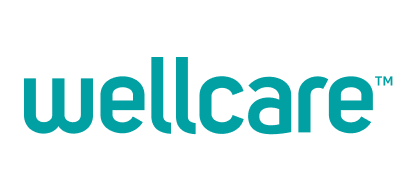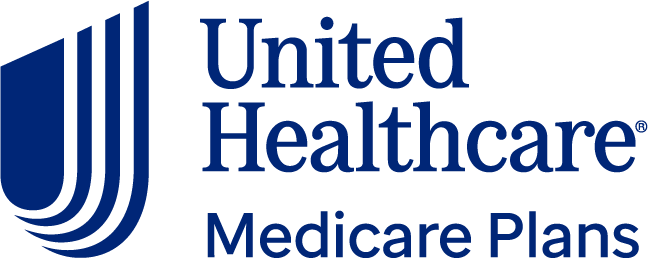
Wellcare
3.5
CMS Star Rating
on Healthpilot
Many, or all, of the products featured on this page are from our advertising partners who compensate us when you take certain actions on our website or click to take an action on their website. However, this does not influence our evaluations. Our opinions are our own. Here is a list of our partners and here's how we make money.
October 2024
2024 is the last year for Mutual of Omaha Medicare Part D plans. The Mutual of Omaha Rx Essential, Mutual of Omaha Rx Premier and Mutual of Omaha Rx Plus plans are being discontinued for 2025. If you’re a member of any of those plans, you’ll need to switch.
If you have a Mutual of Omaha Medicare Part D plan in 2024, you won’t be automatically enrolled in different coverage for 2025. To stay covered, you’ll need to sign up for a new plan. Take a look at our picks for the best Medicare Part D plans in 2025 to get started finding the best option for you.
The information below refers to Mutual of Omaha’s 2024 Medicare Part D plans, which remain in effect through the end of 2024.
Mutual of Omaha Medicare Part D plans aren’t great options in 2024. The company allows more flexibility than some competitors to choose plans with different arrangements of copays, coinsurance and deductibles without a major difference in premiums, but its star ratings for quality are poor.
Unlike many Medicare Part D insurance companies, Mutual of Omaha doesn’t sell Medicare Advantage plans. The company specializes in insurance that complements your main health insurance, such as Medicare Part D plans, Medicare Supplement Insurance, life insurance and long-term care insurance.
About 183,000 Medicare beneficiaries have Mutual of Omaha Part D prescription drug plans as of September 2024.
Here’s what you should know about Mutual of Omaha Medicare Part D prescription drug plans.
Medicare prescription drug plans from Mutual of Omaha have advantages and disadvantages.
Flexibility with Premier and Plus plans: Mutual of Omaha’s Premier and Plus plans have nearly identical pricing, on average, but different arrangements of copays, coinsurance and deductibles, so shoppers can pick the better fit for their medications for about the same price.
Low quality ratings: Mutual of Omaha’s Part D quality ratings from CMS are significantly lower than most competitors.
Cost sharing: Mutual of Omaha has few $0-deductible and $0-copay options and requires coinsurance rather than copays for many drugs.
Average Part D star rating, weighted by enrollment: 2 stars
Mutual of Omaha’s Medicare Part D plans get an average star rating of 2 stars out of 5 from the Centers for Medicare & Medicaid Services (CMS). For context, the average for all stand-alone plans, weighted by enrollment, was 3.41 stars as of June 2024.
CMS rates Medicare Part D plans on 12 quality measures. (You can find definitions for each of these factors in the CMS Star Ratings Technical Notes.)
These ratings use a 5-point scale, where 5 is the best and 1 is the worst. The agency bases its ratings on drug plans’ quality of service and customer experiences, and ratings are updated annually.
Medicare star ratings are typically released once per year, but in 2024, CMS recalculated its ratings mid-year. Updates took place after multiple court rulings in favor of insurance companies alleging that CMS improperly calculated the 2024 star ratings. NerdWallet has updated this review accordingly.

3.5
CMS Star Rating
on Healthpilot

2.96
CMS Star Rating
on Healthpilot

3.48
CMS Star Rating
on Healthpilot

3.16
CMS Star Rating
on Healthpilot
» More options in our roundup of the best Medicare Part D plans

3.5
CMS Star Rating
on Healthpilot

3.48
CMS Star Rating
on Healthpilot
» More options in our roundup of the best Medicare Part D plans
Here are Mutual of Omaha’s 2024 Medicare prescription drug plans:
Mutual of Omaha Rx Essential: According to Mutual of Omaha, this plan is “ideal for newly eligible Medicare clients, clients with low drug utilization, or clients on low-cost maintenance medications.”
Mutual of Omaha Rx Premier: According to Mutual of Omaha, this plan “delivers affordable coverage and a $0 deductible for Tier 1-2 drugs.”
Mutual of Omaha Rx Plus: According to Mutual of Omaha, this plan “covers a broad choice of prescriptions while offering low-cost generic drug choices.”
Medicare beneficiaries with Original Medicare (Part A and/or Part B) can purchase a Medicare Part D plan for prescription drug coverage. Part D plans are sold by private insurance companies. The costs and coverage can vary significantly, so it’s important to compare options.
“It’s hard to recommend Mutual of Omaha for Medicare Part D in 2024. The company rates poorly on measures of quality and member experience, and its prices also aren’t the most competitive. You can probably do better with another Medicare Part D company in 2024.”

— Alex Rosenberg, lead writer covering Medicare
Here are the 2024 premiums and deductibles for Mutual of Omaha’s stand-alone Medicare prescription drug plans:
Plan | Pricing |
|---|---|
Mutual of Omaha Rx Essential | Monthly premiums:
Annual deductible: $545. |
Mutual of Omaha Rx Premier | Monthly premiums:
Annual deductible: $349. |
Mutual of Omaha Rx Plus | Monthly premiums:
Annual deductible: $545. |
» If you have concerns about affording Medicare Part D, look into Medicare Extra Help.
Prices for Mutual of Omaha’s highest coverage plan, Rx Plus, have gone down since 2023, falling by about $9 per month. That’s not the case for the two less expensive plans. The mid-range Rx Premier plan is about $10 more per month than last year, making its monthly premium almost identical to the Rx Plus plan. The lower-cost Rx Essential plan is up by a little under $5 per month, on average.
Deductibles for the Essential and Plus plans are both up by $40, rising to hit the maximum that plans are allowed to charge in 2024. By contrast, the Premier plan’s deductible has fallen from $505 in 2023 to $349 in 2024.
Two Mutual of Omaha Medicare Part D plans have $0 deductibles for certain drugs:
Mutual of Omaha Rx Essential: $0 deductible for Tier 1 generic drugs. The deductible for all other drugs is $545.
Mutual of Omaha Rx Premier: $0 deductible for Tier 1-2 drugs. The deductible for Tier 3-5 drugs is $349.
The Mutual of Omaha Rx Plus plan has a $545 deductible for all covered drugs.
Mutual of Omaha’s Essential plan has a $0 copay for Tier 1 drugs from preferred pharmacies. The Premier and Plus plans don't have any $0 copays, but Tier 1 drugs from preferred retail pharmacies have $1 copays for a 30-day supply.
Drugs on higher tiers can quickly get more expensive. As a result, it’s important to check where your medications and pharmacies fall on each plan’s formulary.
You’ll want to check whether you’ll pay a copay or coinsurance for your medications. Copays are set dollar amounts, so it’s easy to see what you’ll pay. Coinsurance is a percentage of the price for your medications, so coinsurance requirements can be more unpredictable and more expensive.
Mutual of Omaha plans start requiring coinsurance rather than copays at different tiers depending on your plan:
Mutual of Omaha Rx Essential: Copays for Tiers 1-2; coinsurance for Tiers 3-5.
Mutual of Omaha Rx Premier: Copays for Tiers 1-3; coinsurance for Tiers 4-5.
Mutual of Omaha Rx Plus: Copays for Tiers 1-2; coinsurance for Tiers 3-5.
You can enter your medications and pharmacy information on Mutual of Omaha’s website to see which drugs are covered and review your estimated costs with different plan options.
Mutual of Omaha offers stand-alone Medicare prescription drug plans in Washington, D.C., and every state except New York.
All three Mutual of Omaha plan options are available in every market the company serves.
Mutual of Omaha, headquartered in Omaha, Nebraska, was founded in 1909 as the Mutual Benefit Health & Accident Association. The company changed its name to Mutual of Omaha in 1950. Mutual of Omaha sells Medicare Supplement Insurance and recently began selling Medicare Advantage plans co-branded with Wellcare. Other products include Mutual of Omaha life insurance, dental insurance, long-term care insurance, disability insurance and other financial services such as annuities, mortgages and investment services.
» MORE: Read our review of Mutual of Omaha Medicare Supplement Insurance (Medigap)
Get more information below about some of the major Medicare Part D companies. These insurers offer plans in most states, but specifics may vary depending on your location.
The interactive tool on Medicare.gov can help you find a Medicare Part D plan that covers your prescriptions. It also helps you compare costs among Medicare Part D and Medicare Advantage plans available to you.
Here are some things to keep in mind when comparing plans:
Check the formulary: You’ll want to make sure the medicines you currently take and, importantly, any you think you might need in the future, are covered under each of the plans you’re considering. Talk to your health care providers about what brand-name and generic medicines to look for and any alternatives that may also work in case you can’t find your current medicines on the plans available in your area.
Look for plan changes: Formularies change frequently. Your insurer should send you a Notice of Plan Change when the formulary changes. Read that document carefully.
Check the pharmacy network: Most Medicare Part D plans negotiate with a network of pharmacies for the lowest cost. Check to see if your pharmacy or an equally convenient one is in the plan’s network. Also, compare prices for using mail order.
If your plan does change, and the change affects the prescription drugs you need, you can switch plans during Medicare's open enrollment period, Oct. 15 to Dec. 7. Changes go into effect on the following Jan. 1.
NerdWallet’s Medicare Part D reviews are based on ratings data from the Centers for Medicare & Medicaid Services (CMS), pricing, cost-sharing requirements, formulary design, consumer experience and more.
NerdWallet reviewed eight Medicare Part D insurance companies based on highest enrollment and greatest online search volume. Together, these eight companies cover about 92% of Medicare beneficiaries with stand-alone Medicare Part D plans, according to CMS data. We review at least five major Medicare Part D companies in every state in the United States.
These reviews are a guide, but we encourage you to shop around and compare several plans to find the best coverage and rate for you. NerdWallet does not receive compensation for any reviews. Read our editorial guidelines for additional information.